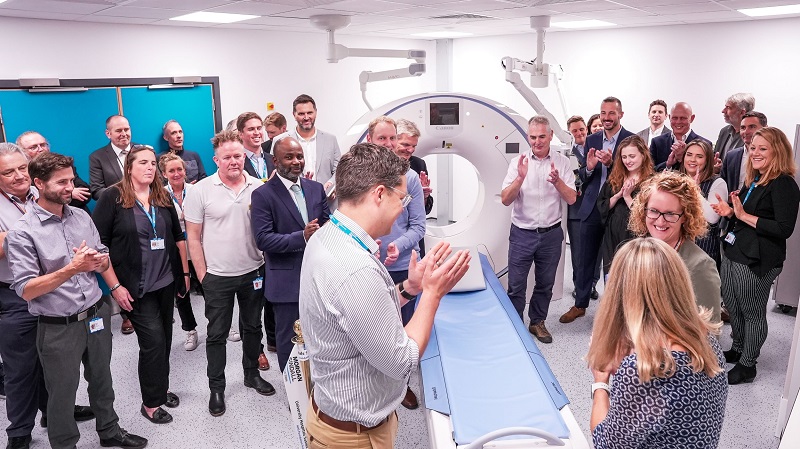Morgan Sindall Construction has completed the development of a community diagnostic facility at Southlands Hospital.
Bringing essential services closer to the community, the facility, commissioned by University Hospitals Sussex NHS Foundation Trust (UHSussex), features an MRI scanner, CT scanner, two X-ray machines, and a chest X-ray machine.
Procured through the Pagabo framework, Morgan Sindall has worked alongside Ward Williams Associates and architect, Crowther Associates, to refit and reconfigure underutilised areas of the hospital, improving operational efficiency.
The work is part of the UK Government’s pledge to launch 40 new community diagnostic centres (CDCs) across England, with a target of providing around 2.8 million scans in their first full year of operation.
Through using Morgan Sindall’s Intelligent Solutions approach, the team innovatively designed and installed removable sections of the RF Cage walls to the MRI suite to enable access for future replacement and improvement strategies.
This will offer the trust flexibility for the long-term future while also minimising disruption to essential services.
Neil Cripps, clinical director for community diagnostic centre in West Sussex, said: “The patient has to be at the heart of everything we do, and our services must be sustainable.
A special event was held to mark completion of the new facility
“The Community Diagnostic Centre provides the perfect training environment, which will promote our recruitment and retention of the best people.
“Having a dedicated, purpose-built unit will ensure we can deliver the best-quality service to our patients.
“And now we have the centre in operation, we will be working with our primary care colleagues to develop suitable direct access pathways to enable our patients to access the right care, at the right time.”
Jemma Deane, community diagnostic centre operational manager at University Hospitals Sussex NHS Foundation Trust, added: “The centre will be able to deliver diagnostics to over 45,000 patients in the first year, which will support cancer pathways, allowing earlier access away from the acute sites.
“The pathway development work will aim to speed up the time from referral to a working diagnosis, which will also increase patient reassurance when they can be quickly stepped down from a query cancer pathway.”
